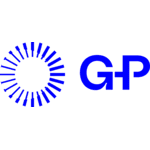OKR vs. KPI is more of an iPhone vs. iPad than a Coke vs. Pepsi argument. Hold on … we can explain.
Most people think OKRs and KPIs are two different management frameworks that address similar situations and can be used interchangeably — hence the OKR vs. KPI argument.
But that's not the case, as these two cannot exactly be compared directly.
Just as you wouldn't exactly compare an iPhone with an iPad. Because both of these devices serve different functions, even if some of them overlap.
Using this line of thought will help you better understand the OKR vs. KPI debate, which contrasts with the Coke vs. Pepsi perspective that a lot of people have.
Now that your mind is prepared for what to expect, let's start with what KPI and OKR mean individually.

What Is KPI?
The acronym KPI means key performance indicator. In simple terms, KPIs are metrics you can accurately measure to show progress.
Think of KPIs as a weight scale. If, for example, you are trying to lose weight, keeping track of your weight reveals whether you're making progress in your weight loss journey or not. A scale is an ideal tool that helps you do just that. For businesses, the ideal tool is a set of KPIs.
KPIs can be used to indicate how a company is performing by tracking the key metrics in line with the goals within each facet of the company.
KPI Examples
Every organization has a set of KPIs they periodically monitor to tell them they are either doing just fine or they need to get their act together to meet certain targets. Examples include:
- Number of new leads
- Conversion rate
- Organic web traffic
- Return on investment
- Profit margin
- Customer acquisition
- Sales cycle length
- Customer lifetime value
- Customer retention
To fully understand and drive home the point of this concept, let's look at an example:
Company A has a new lead KPI of 50 per month. If in a given month the number of new leads coming into sales is 50 or above, they are hitting the target of this KPI, and no action needs to be taken.
But if the number of new leads in a month is below 50, then the company knows extra focus and effort is needed to improve lead generation.
Depicted below is the data of the company's lead generation metric from January to June.
So far from January until May, the KPI shows that the company is hitting, and sometimes surpassing, the 50 mark.

But in June, the KPI on new leads dropped below the 50 mark, telling the company's marketing team that they need to work on strategies to generate more leads (from social media like LinkedIn, Facebook, etc.). And a positive result must be reflected come July.
What Is OKR?
OKR stands for objectives and key results, and it is a focused goal-setting framework created by Intel's Andy Grove. Initially, the framework was called iMBO: Intel's Management By Objectives. Later on, John Doerr, a student of Grove’s, coined the acronym OKR.
During the first half of his career working in management, he realized that expertise without execution produced mediocre outcomes. As a consequence, he decided to create a structure that would address this disconnect between bigger-picture ideas and results through carefully thought-out plans that actualize this goal.
OKRs help every part of the organization steer toward a common inspirational goal: the objective. Key results are the data used to measure if the company has reached this goal or not.
They can be used at any individual level within an organization (i.e. HR, marketing, operations, etc.).
The OKR framework is a very simple one. Typically, the organization starts by defining one or more objectives (usually there are three or five) on a companywide or team level. These objectives should be qualitative, ambitious, and usually measured quarterly.
The next step is to define key results under each of the objectives. Typically, these key results are three to five in number, and they measure outcomes that indicate whether or not you have reached your objective.
Key results should be quantifiable, measurable, and achievable. They are about pushing to be better and not about reaching certain "business as usual" outcomes.
OKR Example
Let's look at a practical example of the application of OKR using a software company.
A good objective would be:
"Research and improve customer satisfaction"
A few key results that would be good for achieving this objective would be:
- Increase Net Promoter Score (NPS) from 45 to 55.
- Get 2,000 satisfaction survey responses annually.
- Present an action plan of five improvements (i.e. software updates, new features, more flexible subscription plans, etc.)
Coming up with an objective and subsequent key results as stated above is not an easy task. But there are tools that can help with planning and tracking the execution of your objectives and key results.
As an organization looking to grow using OKRs, consider leveraging the best OKR software in the market. It can simplify and accelerate the process of reaching your goals with OKRs.
OKRs vs. KPIs: The Differences
From their definitions, you can see some of the differences between the two. But to make the contrast more apparent, here are several attributes that further distinguish them.
Mode of Operation
As far as mode of operation is concerned, KPIs and OKRs differ in the sense that:
- OKRs are explicitly linked to specific strategic goals
- KPIs link to a process or system, and this process may or may not be strategically important.
In other words, OKRs are focused on achieving specific results which are always beneficial to the growth of the business. KPIs, however, measure data that may not necessarily contribute to the growth of the business.
Another difference in their functionality is that KPIs do not require any project implementation and delivery. However, OKRs demand lines of action (key results).
Duration
OKRs need to be reviewed and refreshed about every three months (i.e. quarterly). KPIs can be tracked yearly, monthly, or weekly. Usually, they are tracked annually to review how the business performed in the previous year.
Designation
OKRs are assigned to an individual, a team, or a department in an organization. KPIs have no formal ownership. They are simply presented to the stakeholders in the organization during decision-making meetings.
Flexibility
The objectives in an OKR system can change over time as strategy evolves, whereas for KPIs they remain constant no matter what.
How KPI and OKR Interact
KPIs and OKRs both have their roles to play in an organization, and you cannot replace one with the other.
Organizations sometimes think they can adopt OKRs to spur rapid growth and development while abandoning the KPI framework. This should not be the case, as OKRs can sometimes complement KPI tracking. Take our illustration above about the software company as an example.
If the company uses a set of KPIs to track lead generation, it can easily notice when there is a drop in the number of leads generated per month - 50 in this case. Then an OKR can be created in order to improve the KPI.
Though these two frameworks interact in this manner, it is not best practice to use a KPI as a key result in an OKR.
Going back to our illustration, if the number of new leads drops to 30, you don't want to add as a key result to "increase new leads from 30 to 50" because you don’t have direct control over how many leads are generated.
A better key result would be to "upgrade software" or "add X features". These examples directly affect the factors that potential new leads consider before providing their contact information.
Final Thoughts
The best business practice for organizations is to simultaneously use both OKRs and KPIs:
- KPIs to monitor performance and get metrics on what needs improving and what is doing perfectly fine.
- OKRs to promote rapid growth and objectively address deficiencies in the organization.



























